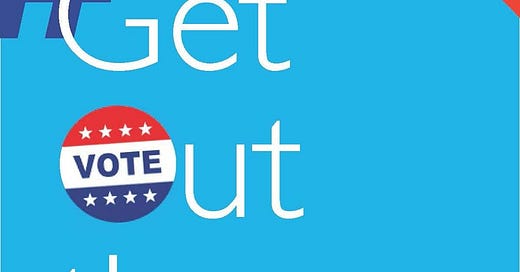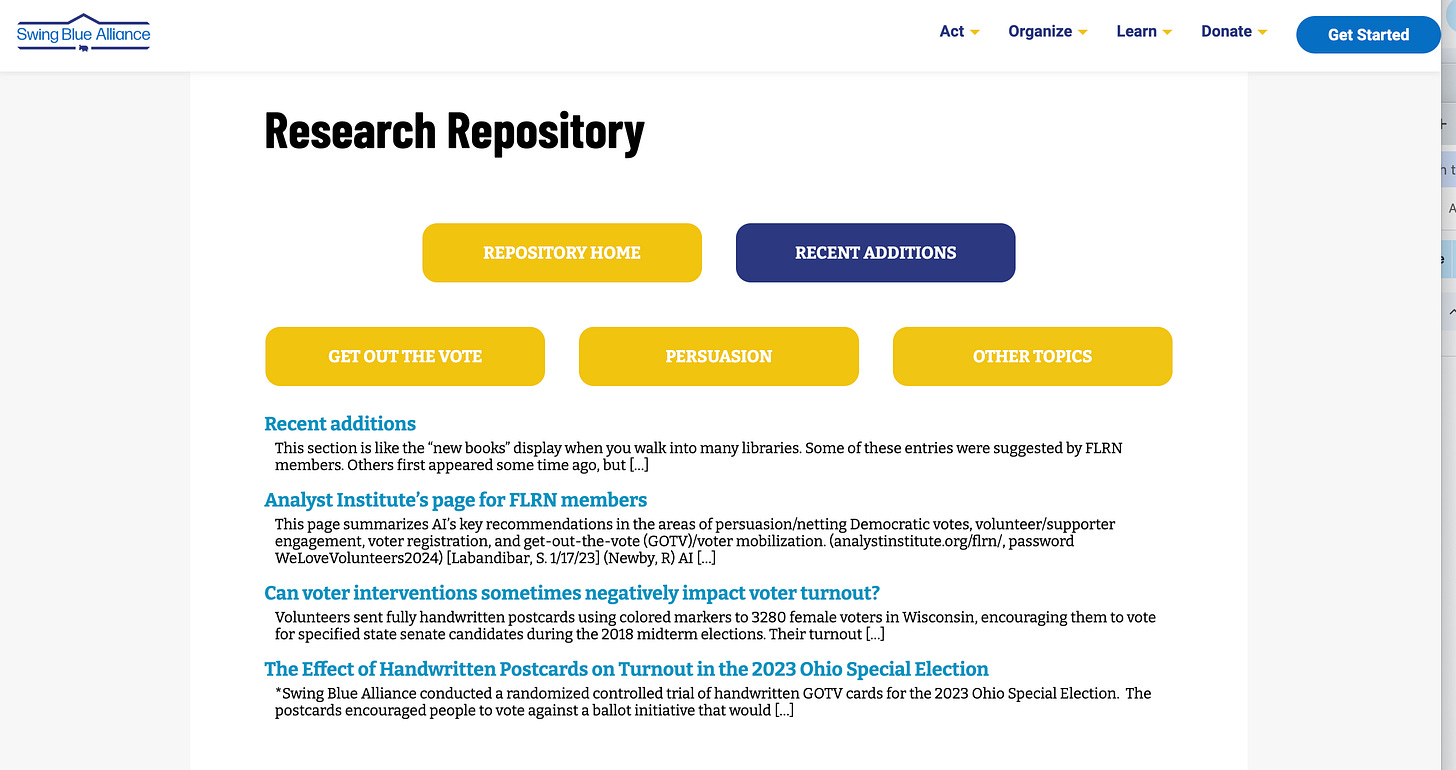Eyes Open: The Field Leaders Research Network
The Field Leaders Research Network helps frontline activists tap into research and leverage findings to inform their work.
Is grounded research driving your group’s decisions for where and how to invest your energy? Questions about impact are tough to answer, but the Field Leaders Research Network (FLRN) has taken up the challenge.
Groups and individuals can tap in to FLRN in 3 ways
1) Join the FLRN for monthly presentations which discuss the practical implications of research. FLRN has announced its June speaker: Brian Dunn from Field Strategies. Brian will discuss the practicalities of voter registration through canvassing. Brian has studied behavior characteristics of very successful canvassers in low turnout urban settings, and how to maximize productivity of canvasser hours. His presentation includes an emphasis on the important issue of quality control in this work.
Finale Norton, an activist with Network NOVA and Rural Ground Game, finds value in taking the everyday simple things we all do and examining them with scientific rigor. “The research findings inform the way I think about the audience for projects like billboards. With lay people in a group of experts, we have a mix of perspectives on the research, which makes for lively discussions,” Finale notes. “The language was a bit intimidating at first. I don’t have a research background, yet every question I have asked has been answered with respect.”
New members are welcome. Apply to be a member of the FLRN here.
2) Read summaries of research. Bob highly recommends the book Get Out the Vote, in which authors Green and Gerber reviewed hundreds of studies on the impact of election-related tactics like door-to-door canvassing, direct mail and phone banks.
Aware that most activists are doing the work, not reading research, FLRN members have distilled take-home points for activists from this book and other research in the Research Repository.
3) Make an appointment with Bob Newby to discuss relevant studies if your group is looking to learn about research findings before making decisions about tactics. Bob is a retired neuropsychologist with an interest in political science and behavior change.
Here is an example of how Bob makes sense of available research studies.
Bob talked through his thoughts on a research study that Swing Blue Alliance conducted—a randomized controlled trial of handwritten GOTV cards for the 2023 Ohio Special Election.
“The strongest conclusions about impact on particular audiences come from studies that set up an experiment with a control group. (You might see this referenced as randomized controlled trials). Randomly chosen voters get the intervention, for instance receiving a card, whereas others don't. Then you can compare the behavior of the members of the two groups.
Before putting faith in any conclusions, Bob looks for the size and characteristics of the targeted audience. He says, “You want a big enough sample to see a pattern emerge, a pattern that is statistically more likely than a chance recurrence. To detect smaller effects, an appropriately large sample size is needed.”
The case of GOTV cards for the 2023 Ohio Special Election.
The postcards encouraged people to vote against a Republican-backed ballot initiative that would have increased the threshold needed to pass state constitutional amendments from 50% to 60%.
Features of the Study of OH GOTV Cards—Meeting Bob’s Criteria
✓ Specific research question about observable behavior
Do postcards increase the likelihood of voting?
✓ Target audience specified
Likely Democratic voters based on voting records
✓ Target audience characteristics
Unlikely to be reached by canvassing or phone
✓ Intervention and control
90% received cards (36,000+); 10% no cards (3,680)
✓ Methods and analysis match question
Analyzed voting and nonvoting behavior
Bob found the outcome clear: for this unusually timed election, the group of targeted Democratic voters (those receiving postcards who were unlikely to receive phone calls) turned out at a higher rate than a similar group that didn't receive cards. The postcards increased the likelihood of voting by 1.2%, which is substantial among mail programs.
With Eyes Open
“Sometimes we activists are intense in our work and that can cause us to focus on one thing and leave other things unexamined. FLRN gives me a chance to take stock and make sure I’m not overlooking some way to do the work more strategically with a bigger impact.
It pushes you, if you are open to new ways of looking.”—Finale Norton
Research undoubtedly has to play catch up with the innovative ways groups are conducting voter engagement. Meanwhile, the research results we have make us stronger, because they can lead activists to implement effective tactics and strategies informed by data and scientific analysis.
The FLRN is working to make sure that activists find it easy to learn from the research we do have. Apply here to join.
Contributors: Susan Labandibar and Robert Newby, co-leaders of the Field Leaders Research Network, Finale Norton, FLRN Member, Steve Schear, and Martha Merson
The Grassroots Connector covers activism from ALL angles. Read More
Thanks for reading The Grassroots Connector! Subscribe for free to receive new posts.





